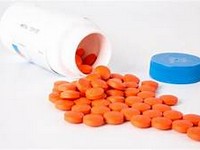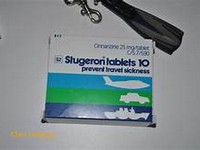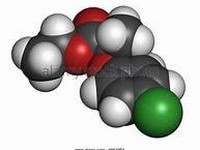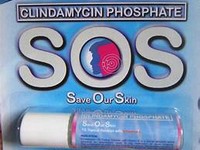Thymoglobuline

Thymoglobuline
CLINICAL USE
Prophylaxis and treatment of acute or steroid resistant transplant rejectionDOSE IN NORMAL RENAL FUNCTION
Prophylaxis:Kidney 1–1.5 mg/kg/day Heart 1–2.5 mg/kg/day for 3–9 days Treatment: 1.5 mg/kg/day for 7–14 daysPHARMACOKINETICS
DOSE IN RENAL IMPAIRMENT
GFR (mL/MIN)
DOSE IN PATIENTS UNDERGOING RENAL REPLACEMENT THERAPIES
IMPORTANT DRUG INTERACTIONS
Potentially hazardous interactions with other drugsRisk of over-immunosuppression with concomitant prescribing of standard maintenance immunosuppressive regimensSafety of immunisation with attenuated live vaccines following Thymoglobuline therapy has not been studied; therefore, immunisation with attenuated live vaccines is not recommended for patients who have recently received ATGADMINISTRATION
Reconstition
–Route
IV via central line or via peripheral vein with good blood flow ratesRate of Administration
4–16 hoursComments
Dilute dose in 250 mL sodium chloride 0.9%, maximum concentration 5 mg/mL for peripheral administrationTo minimise risk of adverse effects, chlorphenamine (10 mg IV) and hydrocortisone (100 mg IV) may be given 15–60 minutes before administration of full dose ATGChlorphenamine, hydrocortisone and adrenaline should be immediately available in case of severe anaphylaxisOTHER INFORMATION
Aim to keep total lymphocyte count below 3% of total white cell count or 50 cells/µL. Alternatively, keep absolute T cell count below 50 cells/µL, and only dose when above thisThe manufacturers advise that overdosage of Thymoglobulin may result in leucopenia (including lymphopenia and neutropenia) and/or thrombocytopenia. The dose of ATG should be reduced by one-half if the WBC count is between 2000 and 3000 cells/mm3 or if the platelet count is between 50 000 and 75 000 cells/mm3. Stopping ATG treatment should be considered if the WBC count falls below 2000 cells/mm3 or platelets below 50 000 cells/mm3Avoid simultaneous transfusions of blood or blood derivatives and infusions of other solutions, particularly lipidsATG (rabbit) (Thymoglobuline)t is not licensed for use by anyone else.Atg (RAbbIt) (tHYMOgLObULINe) 71The recommended route of administration for ATG isIV infusion
using a high-flow vein; however, it may be administered through a peripheral vein. In this instance, concomitant use of heparin and hydrocortisone in an infusion solution of 0.9% sodium chloride may minimise the potential for superficial thrombophlebitis and deep vein thrombosis. The combination of ATG, heparin and hydrocortisone in a dextrose infusion solution has been noted to precipitate and is not recommendedATG should not be administered in presence of: fluid overload, allergy to rabbit protein, pregnancy or acute viral illnessTotal rabbit IgG remains detectable in 81% of patients at 60 days. Active ATG (i.e. IgG that is available to bind to human lymphocytes and cause desired immunological effects) disappears from the circulation faster, with only 12% of patients having detectable active ATG levels at day 90
See how to identify renal failure stages according to GFR calculation
See how to diagnose irreversible renal disease
Home








